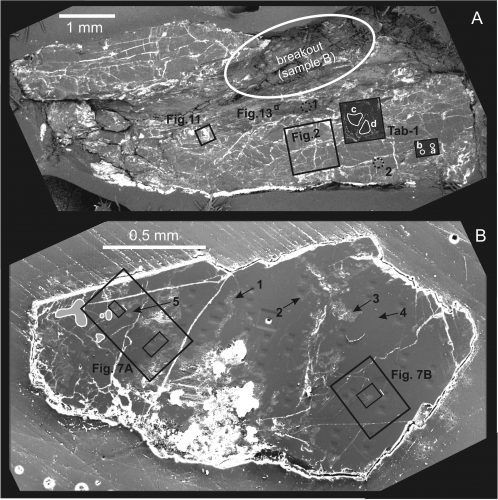A meteorite found in Egypt in 1996, deemed “Hypatia,” was recently further analyzed by researchers at the University of Johannesberg. In their published results, they found that due to a number of unusual compositional features—including high carbon content and unique isotopic ratios—the study of its origin is both literally and figuratively nebulous.
The thirty-gram stone, unlike most meteorites from our solar system, has a high carbon content. Even more interestingly, these carbon-containing compounds have multiple carbon rings and complex organization—the type one might expect to find in organic, life-forming materials. The researchers also found a number of other curious features, including unique isotopic ratios, mineral clusters, and nano-diamonds, leading them to conclude that the rock formed in the early solar nebula.
“One of the things people always like are diamonds,” said Jay Ague, chair of the Department of Geology and Geophysics at Yale University. “Large diamonds are unusual,” he said, referring to the upper spectrum of diamonds found in Hypatia’s structure, which range between fifty nanometers and two micrometers in size. To put this in perspective, the head of a pin is approximately 1,500 micrometers. While this might seem tiny, the diamonds are actually quite large considering their extraterrestrial, ancient origin. In their study, the researchers suggest that the diamonds may have been formed from the impact of the meteorite hitting Earth, but they leave their interpretation open to other possibilities.
Another unique feature of the stone is its isotopic ratios. Isotopes are different versions of chemical elements with different weights. Ague explains that different parts of the solar system fractionated isotopes differently. This allows researchers to use isotopes to help identify an object’s origin. “Isotopic Fingerprints,” as Ague calls them, can even differentiate between rocks with origins as cosmically close as Earth and its Moon. The researchers point to the ratios of heavy to light nitrogen isotopes to indicate that the object is not from Earth or even from our solar system.
Isotopes are also useful in identifying the time and atmosphere in which a rock was formed. The existence of xenon-129 in the rock, the authors claim, is proof of its age. Xenon-129 is the decomposition product of iodine-129, which takes millions of years for even half of a sample to decay. Furthermore, the presence of iodine in scattered pockets, as well as grains of other minerals such as nickel, phosphorus, and aluminum, suggests the pre-solar nebula was more heterogeneous than once thought, helping reshape our theories of the formation of our solar system and even potentially the universe.
Further analyses of the carbonaceous matrix and other isotopes will reveal even more about the environment in which the stone was formed, the authors write. “Rocks are quite refractory,” Ague explained. “The geological and geochemical records they contain can stretch back billions of years and tell us about the origins of solar system.”
Beyond just the cyclic carbon compounds found in the matrix of Hypatia, other organic chemicals and even amino acids have been found on extraterrestrial objects coming to Earth from the depths of space, possibly suggesting that the compounds so crucial to the formation of life on Earth are of extraterrestrial origin. “Are these the things from which life sprouted? It is hard to find more thought-provoking questions,” Ague said. While much is still unknown about this rock, one thing is certain—its true value far exceeds that of a few nano-diamonds.
References
Belyanin, Georgy A. “Petrography of the Carbonaceous, Diamond-Bearing Stone ‘Hypatia’ from Southwest Egypt: A Contribution to the Debate on Its Origin.” Science Direct, Elsevier Ltd., 28 Dec. 2017, www.sciencedirect.com/science/article/pii/S0016703717307962.

